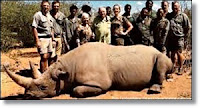 Trying to get an infant or a toddler to eat can be a trying task. Between getting them to sit still and then convincing them that eating strained peas is a wonderful experience – meal time can easily take a full hour! We wish all the small children in our lives would take a page from the little dog in this video.
Trying to get an infant or a toddler to eat can be a trying task. Between getting them to sit still and then convincing them that eating strained peas is a wonderful experience – meal time can easily take a full hour! We wish all the small children in our lives would take a page from the little dog in this video.Wrapped up in a little blanket, just like a human infant, the dog in this video is all set for snack time. His guardian prepares a spoonful of food and the dog knows exactly what to do! There is no need for his guardian to even prompt him to “say ah!” He opens his little mouth and squeals as if he can’t wait to get a big heaping spoonful.






























